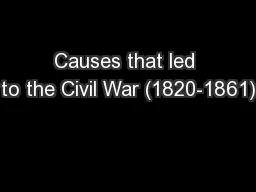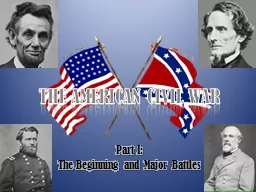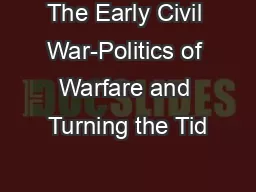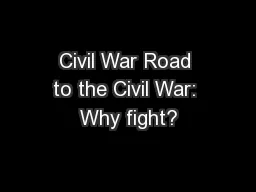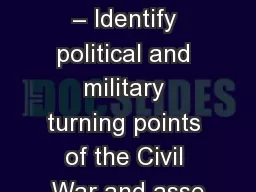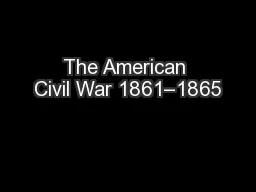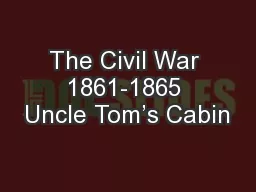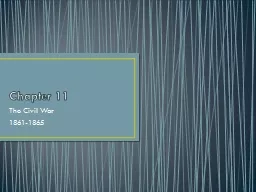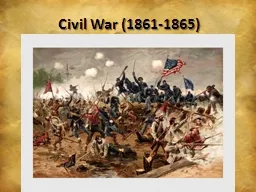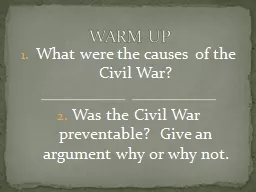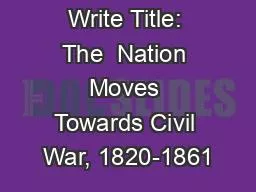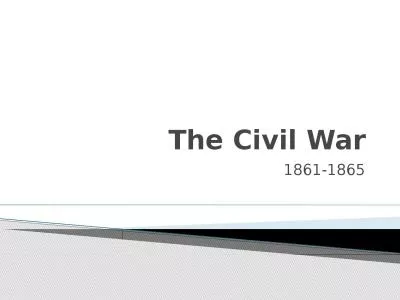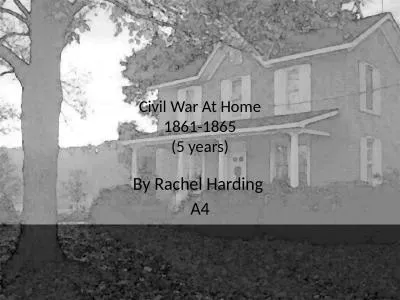PPT-Causes that led to the Civil War (1820-1861)
Author : luanne-stotts | Published Date : 2017-06-24
Build up to the Civil War Missouri Compromise The Compromise of 1850 KansasNebraska Act Fugitive Slave Act Uncle Toms Cabin Dred Scott v Sandford New Territories
Presentation Embed Code
Download Presentation
Download Presentation The PPT/PDF document "Causes that led to the Civil War (1820-1..." is the property of its rightful owner. Permission is granted to download and print the materials on this website for personal, non-commercial use only, and to display it on your personal computer provided you do not modify the materials and that you retain all copyright notices contained in the materials. By downloading content from our website, you accept the terms of this agreement.
Causes that led to the Civil War (1820-1861): Transcript
Download Rules Of Document
"Causes that led to the Civil War (1820-1861)"The content belongs to its owner. You may download and print it for personal use, without modification, and keep all copyright notices. By downloading, you agree to these terms.
Related Documents

